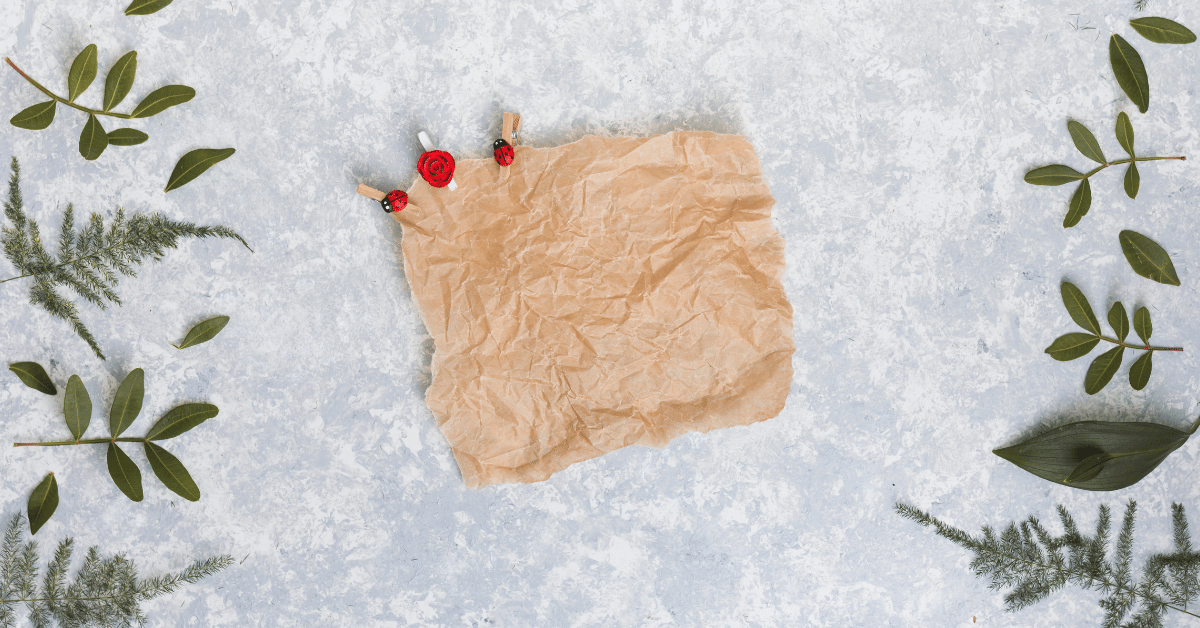It sits quietly in a drawer or on a pantry shelf, often overshadowed by flashier kitchen supplies. Yet freezer paper is a quiet champion—one of those rare household tools that proves its worth in countless ways once you truly understand it. At first glance, it’s nothing extraordinary: a sturdy roll of paper with a glossy coating on one side. But in reality, it’s a storage expert, a craft supply, a DIY hero, and a surprisingly durable problem-solver. In the kitchen, it guards against freezer burn and locks in freshness, helping home cooks store everything from wild-caught salmon to homemade bread without sacrificing texture or flavor. Outside the kitchen, it becomes a stencil for custom T-shirts, a helper in quilting projects, and even a surface protector during painting. Its versatility is what makes it special—an inexpensive product that can solve problems in multiple areas of daily life. While many people think of freezer paper only as a food wrap, those who know its potential keep it stocked not just in the kitchen but in the craft room too. This guide will explore its origins, how it works, why it stands apart from wax and parchment paper, and the many ways you can make it work for you. By the time you finish reading, you may never look at a roll of freezer paper the same way again.
Understanding Freezer Paper: The Basics
Freezer paper is a heavy-duty paper with a polyethylene coating on one side. This coating makes it resistant to moisture and air, which is essential for protecting food from the harsh, dehydrating conditions of a freezer. The uncoated side is left plain so it can be labeled easily with a pen or marker. This dual design is intentional: it allows the coated side to form a tight barrier against food while the plain side provides space for organization. The coating is also key in crafting—when ironed onto fabric, it sticks just enough to hold in place but peels away cleanly without damage. In short, freezer paper’s construction balances strength, flexibility, and reusability, making it suitable for both culinary and creative purposes.
A Short History of Freezer Paper
Before freezer paper was invented, preserving food in a frozen state was a constant battle. People wrapped meat in butcher paper or cloth, only to find it dry, discolored, and tasteless after weeks in cold storage. In the 1950s, manufacturers developed a paper with a thin plastic layer fused to one side, solving the freezer burn problem for good. It quickly gained popularity among hunters, farmers, and home cooks who needed to store meat for long periods. Soon after, crafters discovered another benefit: the coated side could temporarily stick to fabric when heat was applied. This discovery transformed freezer paper into a favorite for quilting templates and stencils. Over time, it became a fixture not just in grocery stores but also in sewing supply shops, bridging the gap between food storage and creative arts.
Freezer Paper vs. Wax and Parchment Paper
To understand freezer paper’s strengths, it’s helpful to compare it with two other common kitchen papers. Wax paper is coated with paraffin wax on both sides, making it resistant to moisture but unsuitable for high heat because the wax melts. It’s great for wrapping cold sandwiches or lining surfaces for rolling dough but can’t handle baking or freezing as well. Parchment paper, coated with silicone, is heat-resistant and ideal for baking, preventing food from sticking to pans. Freezer paper stands apart with its single-sided polyethylene coating, which excels in cold storage by blocking moisture and air. Unlike parchment or wax paper, it’s not meant for oven use—but it can handle the freezer for months without breaking down.
Table 1: Key Differences Between Kitchen Papers
| Paper Type | Coating | Best Use | Heat Resistance | Labeling Ease |
|---|---|---|---|---|
| Freezer Paper | Polyethylene (one side) | Freezing food, crafts | Low | Excellent |
| Wax Paper | Paraffin wax (both sides) | Cold food wrapping | Low | Poor |
| Parchment Paper | Silicone (both sides) | Baking, heat protection | High | Moderate |
Why Freezer Paper Protects Food So Well
The real danger in long-term freezing is not just the cold—it’s the air. When unprotected food is exposed to air in a freezer, moisture evaporates from the surface, forming ice crystals and causing freezer burn. This affects the flavor, texture, and color of the food. Freezer paper solves this problem by creating a moisture-proof barrier with its polyethylene coating. When wrapped tightly, it prevents air from reaching the food, keeping it tender and flavorful for months. The paper side allows you to label the package clearly, ensuring you know what you’re thawing and when it was frozen. For people who buy meat in bulk, hunt, or bake large batches for future use, freezer paper can be the difference between a delicious meal and one ruined by dryness.
In the Craft Room: A Creative Power Tool
Ask a quilter about freezer paper, and you’ll hear a list of uses that have nothing to do with storing meat. Its coated side can be lightly ironed to fabric, creating a temporary hold that makes cutting precise shapes easier. Quilters use it for applique patterns, allowing them to move templates without pins that distort the fabric. Stencil artists use it to create sharp-edged designs for painting on fabric, wood, and even walls. It’s reusable for several rounds of painting or cutting, and it peels away cleanly, leaving no sticky residue. Scrapbookers, book cover makers, and mixed-media artists also use it as a moisture barrier during gluing and painting. Its combination of sturdiness and easy release is rare, which is why creative people keep it in their supply stash.
Practical Tips for Wrapping with Freezer Paper
If you’re freezing food, place the coated side directly against the item to block moisture loss. Wrap tightly, folding the edges to create a snug seal. For oddly shaped foods, press the paper firmly along contours and tape securely without puncturing the wrap. Always write the date and contents on the plain side. For long-term storage beyond six months, consider double-wrapping—first in freezer paper, then in a freezer bag. Avoid using it in the oven or microwave, as the plastic coating can melt. Stored in a cool, dry place, an unopened roll of freezer paper will last for years without losing its effectiveness.
Table 2: Food Storage with Freezer Paper — Best Practices
| Step | Why It Matters |
|---|---|
| Coated side to food | Blocks air and moisture |
| Tight folds | Prevents freezer burn |
| Label and date | Organizes storage |
| Double wrap for long-term | Adds protection |
| Store rolls dry | Keeps coating intact |
Thinking About the Environment
Freezer paper contains a plastic layer, so it’s not biodegradable. However, it can often be reused in non-food projects, extending its usefulness before disposal. Crafters commonly repurpose sheets from food storage for stencils or pattern making. While fully compostable alternatives are still rare, some manufacturers are exploring coatings made from plant-based materials. Until then, the best way to minimize environmental impact is to use freezer paper wisely, reuse it when possible, and recycle the cardboard tube from the roll.
Final Thoughts
Freezer paper’s a reminder that sometimes the most useful tools are also the simplest. In kitchens, it keeps food fresh for months. In craft rooms, it turns into templates, stencils, and protective surfaces. Its ability to serve multiple purposes—from preserving a prized venison roast to helping create a hand-painted quilt square—makes it a quiet but powerful household essential. As one crafter put it, “Freezer paper is like duct tape for creative peopleyou’ll find a hundred uses once you have it.” It’s inexpensive, widely available, and ready to solve problems you didn’t even know you had. If you’ve only ever used it for food, try bringing it into your next craft or DIY project. You may just find it earns a permanent spot in more than one room of your home.
FAQs
1. Why is freezer paper better than plastic wrap for long-term freezing?
Freezer paper provides a thicker, more durable barrier against air and moisture than plastic wrap. Its polyethylene-coated side prevents freezer burn and retains food texture, while the paper side allows clear labeling. Plastic wrap is more prone to punctures and is best suited for short-term storage.
2. Can freezer paper be used directly in cooking or baking?
No. Freezer paper is not heat-resistant, and its polyethylene coating will melt in high temperatures. For baking or roasting, use parchment paper, which can withstand oven heat and prevents sticking.
3. How long can meat last in the freezer when wrapped in freezer paper?
When wrapped properly and stored at 0°F (-18°C) or lower, meat can maintain quality for up to 12 months. For maximum freshness, double wrapping—first in freezer paper, then in a freezer bag—is recommended.
4. Is freezer paper safe for use with all types of food?
Yes, freezer paper is food-safe when used as intended. It works well for meats, fish, baked goods, and even produce. However, avoid using it for hot foods or in heated cooking environments, as the coating is designed for cold storage only.
5. How can freezer paper be reused effectively?
For food storage, reuse is not advised due to hygiene concerns. However, sheets that have not contacted raw food can be repurposed for crafts, quilting templates, stencils, or as protective work surfaces. This extends the product’s life and reduces waste.











